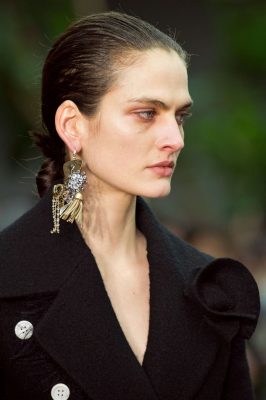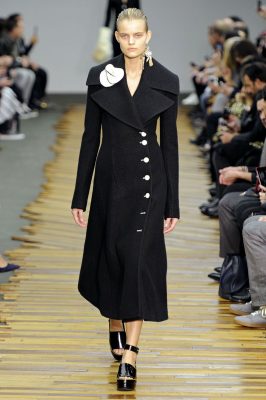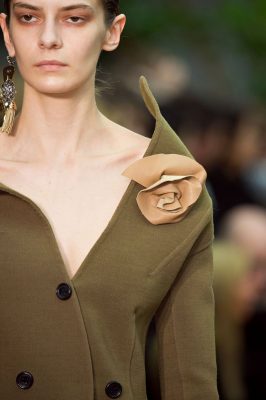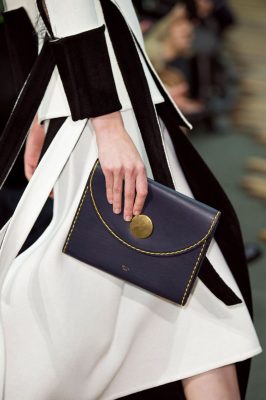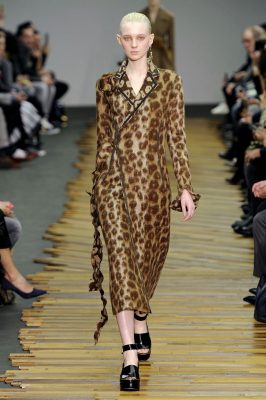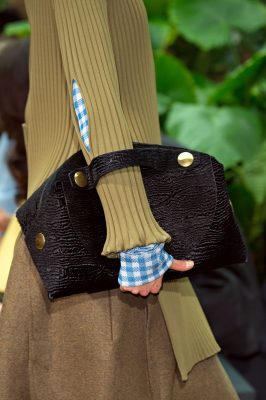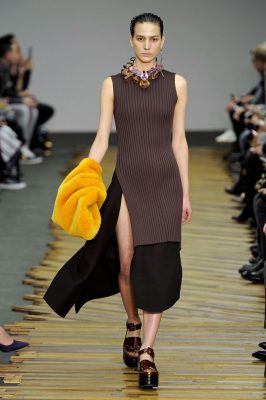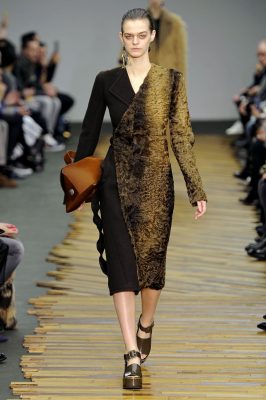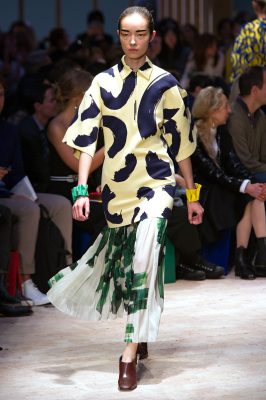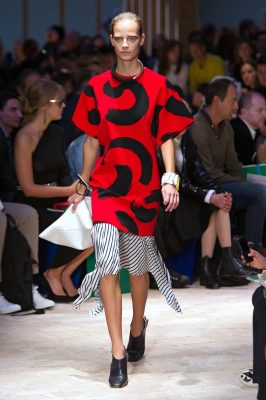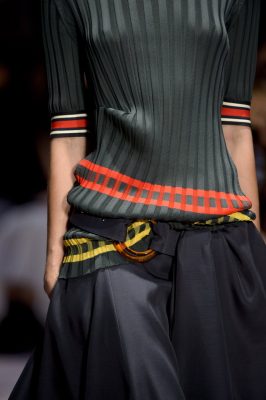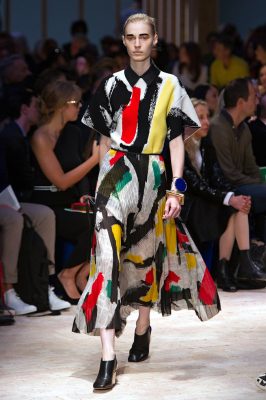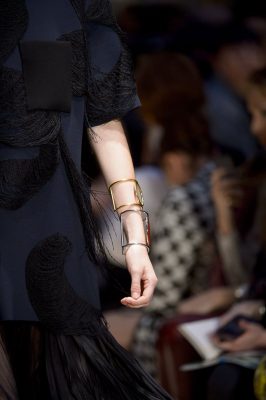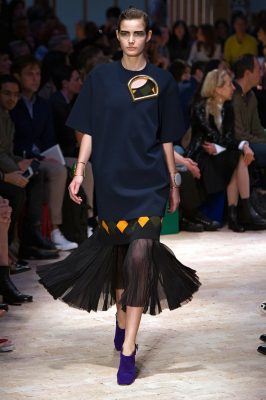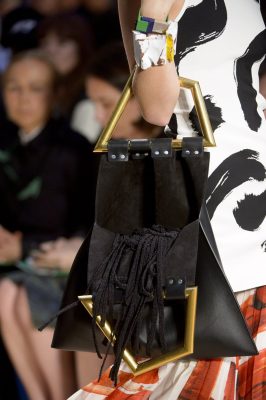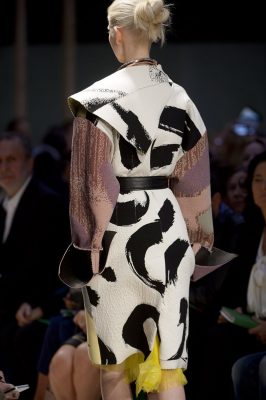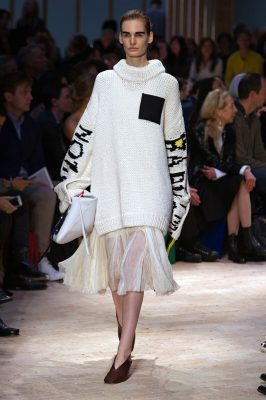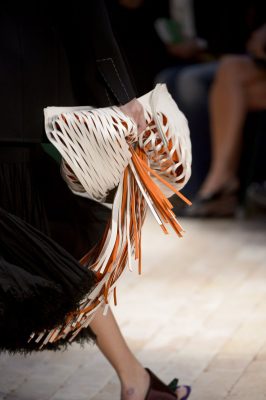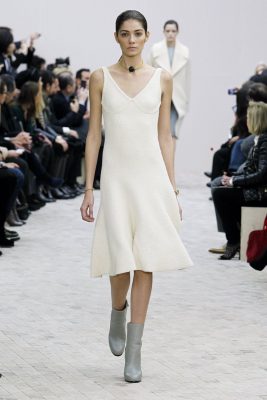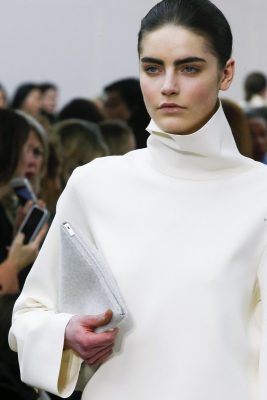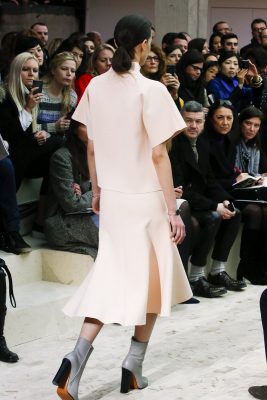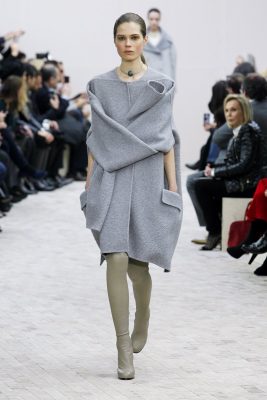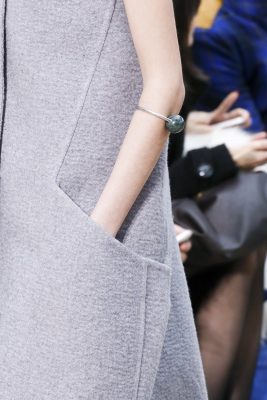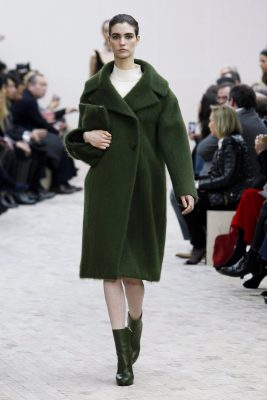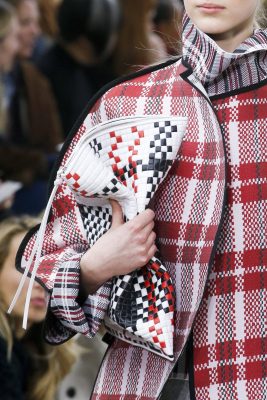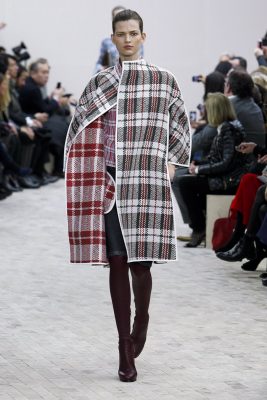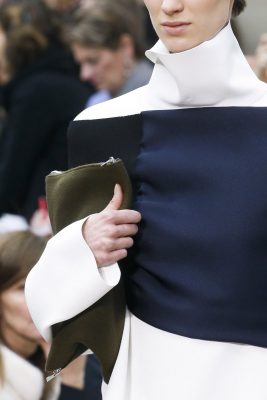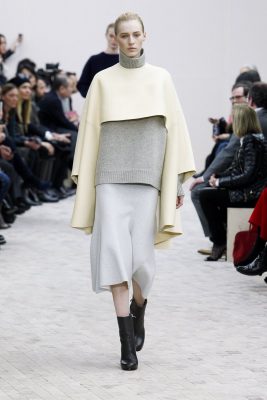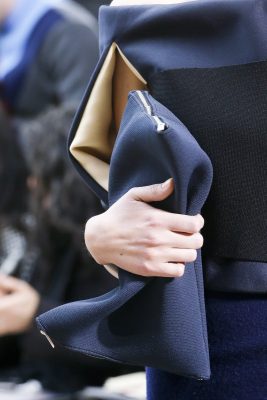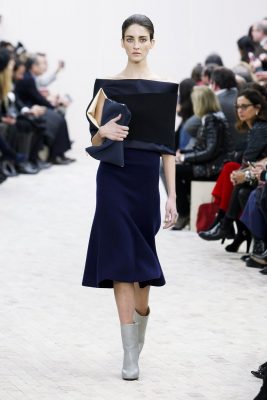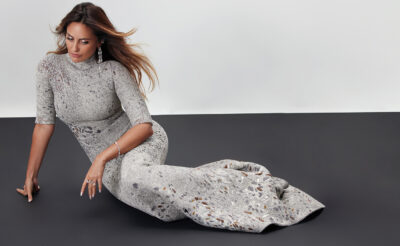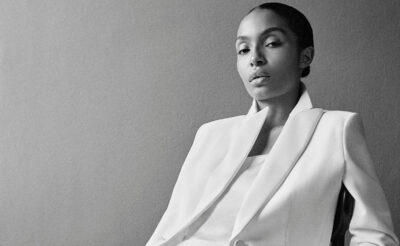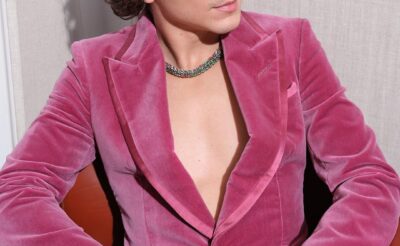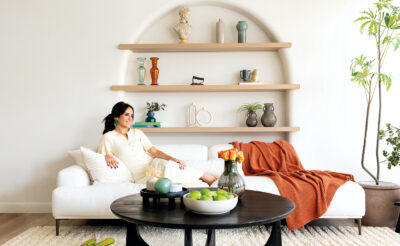Ahead of the Céline spring/summer 2016 show we reflect on our interview with the house's creative director Phoebe Philo in issue 22 of MOJEH.
It was the second of March this year when we all gathered at the Tennis Club de Paris on the outskirts of the city, the location of Céline’s autumn winter 14 runway show. The space had been morphed into a garden where rich, full-bodied plants and gardenia stood magnificently in between each of us, like an indoor orchard. We sat on our seats built from woodland materials and pondered, where was Philo taking us today? Lights out, music on – Dove by Cymande – and here it comes, another collection from the designer who, with each season, presents a lifestyle that we hadn’t yet realised we wanted.
Today the existence up for grabs was life itself. With, everything in the room from the mismatched wooden flooring to the clothes, reminding us how to live, wild and free. The wardrobe – with emphasis on the word wardrobe, not just pieces – consisted of pared back silhouettes from lean trousers with slight flares to double breasted coats, minus the double and the breasted. A shrewd array of fabrics turned the traditional on its head and accentuated the word functional from heavy-duty cottons to unstiffened wools and light furs. Philo later said she imagined her women running through fields, ‘wild, tender, strong.’ The entire set-up was utterly intoxicating. Woman sat on the edge of their seats, liberated and ready to run free, if only it wasn’t for the great metal doors keeping this great garden inside. As with each of Philo’s collections, this is for women who reject all frills and fancies and crave real clothes. ‘I guess there is a bit of a political statement behind Céline, which is that we should be teaching young girls to feel good. I am not a big fan of women being sexualised through clothes,’ says the designer. ‘I have no problem with a woman wearing anything as long as she has chosen to wear it for herself. But I do think there are too many images of women that are sexualised and too many examples of women dressing for other people and disempowering themselves in the process.’
This is perhaps a common understanding today, but one that wasn’t so widely acknowledged even six years ago. That’s where Philo came in, one of fashion’s game changers. The English designer – who lived some of her childhood years in France – took the helm at the Parisian house in 2008 forecasting that what we needed were wardrobes that stood for functionality and power, without being swallowed alive by androgyny, or feeling explicitly lavish or overtly minimal, for that matter. Her first collection was met with a collective gasp of fresh air from the industry; here was the change women had been waiting for. It felt sexy without being sexualised, minimal but far from dull and powerful minus the manly. Always one for experimenting with fabrics and shapes – since her days as a Central St Martin’s student in London, Philo was well known for her novel uses of fabric – heavy silks were cut into bold capes and dresses, while light leathers were teamed with even lighter wools. These are clothes that hold their own on their hangers, built for women who hold their own in life. Like any good relationship, neither relies on the other, but together, they’re a force to be reckoned with. ‘I hope that when women wear Céline they feel confident and strong,’ she says. This was a style that the designer already channelled through her own wardrobe choices of subdued colours and clean silhouettes –she was after all championing trainers as appropriate street and office wear long before Lagerfeld and Simons sent them down their runways. The look signalled independence and emancipation. ‘It felt quite clear from the offset about what I wanted to do in terms of fashion – or certainly what I didn’t want,’ Philo told the Financial Times in 2010. ‘I wanted something that felt honest, that was a mixture of what I want to wear and how I want to live. I felt it needed to be quite simple and very honest and very real.’
I hope that when women wear Céline they feel confident and strong
Phoebe Philo
But before Céline there was Chloé. Philo had grown from first assistant for Stella McCartney to creative director in 2001, it was then that her design philosophy’s first acted as a catalyst for movement and change. Her baby doll dresses, floral prints and effortlessly thrown-together style offered a relaxed, laid-back vibe reminiscent of the swinging Sixties. As we faced terrorism and war, Philo took women back to a time of creativity and liberation. The world couldn’t get enough – think ‘it’ bags, wooden wedges and ponchos – and so it’s of little wonder that Pierre-Yves Roussel, head of the fashion division at LVMH, pursued the designer for two years after she left Chloé in 2006. She was on sabbatical, concentrating on family and balancing life, but if rumours are correct, Roussel travelled to London once a week to convince her to take the position at Céline. Plans had initially been for an eponymous brand but the heads at LVMH needed someone to take on what was then their sinking ship. And Philo had never been one to lust over visions of her own eponymous label anyway. ‘I have an innate fear of fame. I don’t know where it comes from, but I have never thought famous looked like a good place to be,’ she says. ‘I love being incognito and very much value my freedom.’ Like the women who invest in Céline each season, the natural and understated beauty holds herself with the type of self-assurance that needs very little public recognition.
Once the deal with LVMH was struck, everything was to be Philo’s way. ‘I find mediocrity hard. I find that whole area difficult as I care very much about what I do,’ says the designer. The idea was to make the French brand appealing for women internationally, which made Philo’s demand for a London based studio appear all the more reasonable – a feat that had been turned down by previous creative directors Michael Kors, Roberto Menichettie and Ivana Omazic who were all asked to move closer to the brand and not vice versa. She took the house back to its basics: all bar one store in America were closed, ties were cut with mid-range retailers, the accent was placed back on the é. ‘When I started at Céline five years ago, what I found attractive was that it wasn’t an iconic brand, it didn’t have a very strong silhouette or a very famous historical designer, and I found that quite liberating – I didn’t have to follow a path that had been trodden,’ she says. ‘But it did stand for quality – it had never licensed itself out, in the Seventies, Eighties and Nineties, like so many other companies.’ And so there it was, an almost blank canvas for the ultimate stealth-wealth designer. LVMH was ready, Philo was ready, and more importantly, women were ready.
‘I think it would be unrealistic to think that human beings are not going to have some kind of worshipping of beautiful people, because they always have,’ she says. ‘It’s unrealistic to think that the fashion industry, the film industry, the sex industry are not going to have extreme ideas of beauty as a way of selling themselves. I don’t really like it sometimes.’ A sentiment that remains clear in her autumn collection. From the simple elegance of autumn 2013 to her graffiti and African inspired collection for spring of this year, Philo’s visions never lack beauty, instead they depict accurate ideals of it. This season the slightly dishevelled, deconstructed components such as wisps of fur left exposed on coats, or sleeves falling an inch too long, are all emblems of nonconformity and the personal touch – a little human imperfection here and there. Even when you spot what you may believe to be ornamental detailing, don’t be fooled, nothing in this collection is crafted without purpose. The use of one earring as opposed to two – insignia for independence perhaps, ‘I come as me, not me with you’? The belt that falls nonchalantly to the side instead of fastening around the body as it should? You get the idea.
‘What I really do believe is that anybody – and it really doesn’t matter what shape your body is – can be seductive and sexy and gorgeous and beautiful,’ says the designer. ‘I use an extreme idea of beauty as a way of showing Céline but I don’t believe it has to be like that outside of the fashion show.’ There lies the point of Philo, and her entire existence in the fashion world. She shows women the very extremes of their power and potential. And then she leaves it in their hands to decipher how far they’re willing to take it, what are they and aren’t they ready for? It’s never ever aspirational, it’s inspirational. And nor is it ever fashion for that matter. It’s a lifestyle, a state of being.
